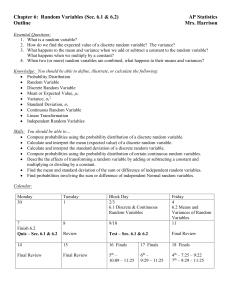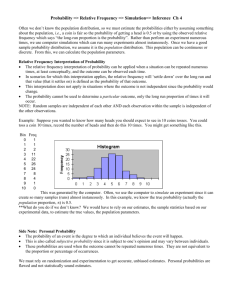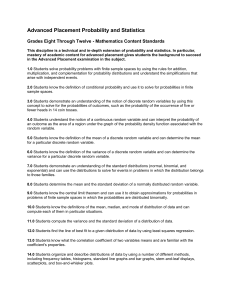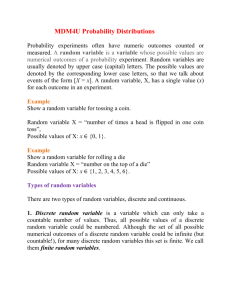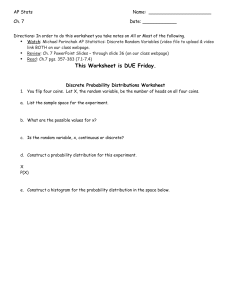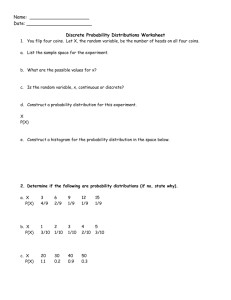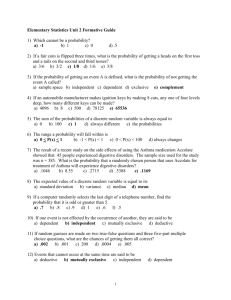Chapter 6: Discrete Probability Distributions
advertisement
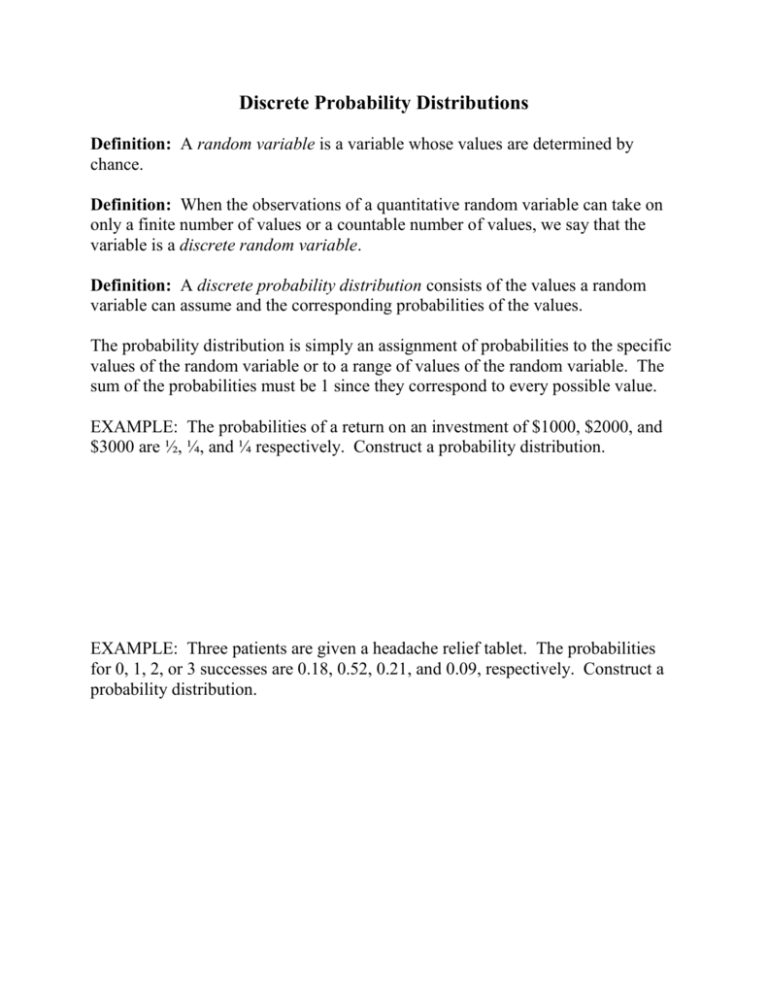
Discrete Probability Distributions Definition: A random variable is a variable whose values are determined by chance. Definition: When the observations of a quantitative random variable can take on only a finite number of values or a countable number of values, we say that the variable is a discrete random variable. Definition: A discrete probability distribution consists of the values a random variable can assume and the corresponding probabilities of the values. The probability distribution is simply an assignment of probabilities to the specific values of the random variable or to a range of values of the random variable. The sum of the probabilities must be 1 since they correspond to every possible value. EXAMPLE: The probabilities of a return on an investment of $1000, $2000, and $3000 are ½, ¼, and ¼ respectively. Construct a probability distribution. EXAMPLE: Three patients are given a headache relief tablet. The probabilities for 0, 1, 2, or 3 successes are 0.18, 0.52, 0.21, and 0.09, respectively. Construct a probability distribution. EXAMPLE: Construct a probability distribution for a family of three children. Let X represent the number of boys. EXAMPLE: Construct a probability distribution for the number of heads after tossing a coin three times. HOMEWORK: p250, 6 through 29 odd Mean Variance and Expectation Formula for the Mean of a Probability Distribution The mean of the random variable with a discrete probability distribution is µ = X1 · P(X1) + X2 · P(X2) + X3 · P(X3) + … + Xn · P(Xn) or µ = ∑ X · P(X) where X1, X2, X3, …, Xn are the outcomes and P(X1), P(X2), P(X3), …, P(Xn) are the corresponding probabilities and is the expected value of x. EXAMPLE: Find the mean number of boys in a family of three children. Number of Boys, X 0 1 2 3 Probability, P(X) 0.125 0.375 0.375 0.125 EXAMPLE: The probability distribution for the number of customers per day at a coffee shop is shown. Find the mean. Number of Customers, X 50 51 52 53 54 Probability, P(X) 0.10 0.20 0.37 0.21 0.12 Formulas for the Variance and Standard Deviation of a Probability Distribution The standard deviation of a probability distribution is [ X 2 P( X )] 2 The formula for the variance of a probability distribution is σ2 = ∑ [X2 · P(X)] – µ2 EXAMPLE: Find the variance and standard deviation for the number of boys in a family of three children. Number of Boys, X 0 1 2 3 Probability, P(X) 0.125 0.375 0.375 0.125 EXAMPLE: The probability distribution for the number of customers per day at a coffee shop is shown. Find the variance and standard deviation. Number of Customers, X 50 51 52 53 54 Probability, P(X) 0.10 0.20 0.37 0.21 0.12 Definition: The expected value of a discrete random variable of a probability distribution is the theoretical average of the variable. The formula is E(X) = µ = ∑ X · P(X) EXAMPLE: A box contains ten $1 bills, five $2 bills, three $5 bills, one $10 bill, and one $100 bill. A person is charged $20 to select one bill. Find the expectation. EXAMPLE: If a player rolls two dice and gets a sum of 2 or 12, she wins $20. If the person gets a 7, she wins $5. The cost to play the game is $3. Find the expected value of the game. HOMEWORK: p 259, 1 through 17 odd

